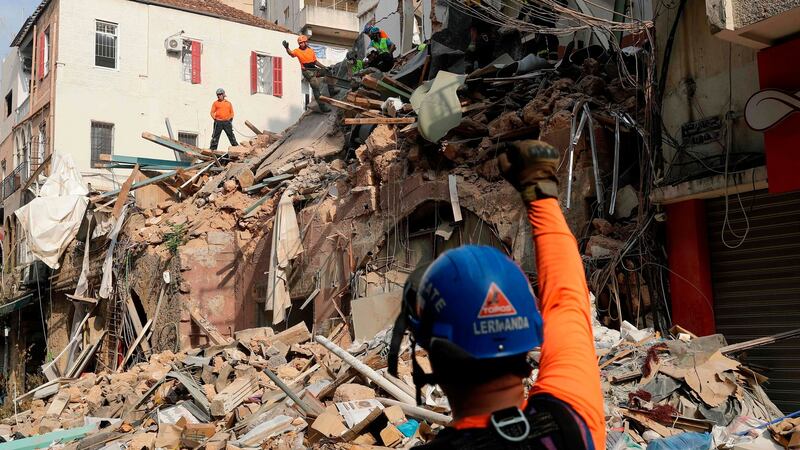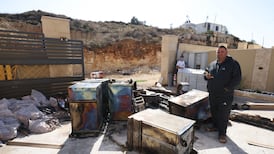Lebanese rescue workers searching through rubble in Beirut after the huge explosion at the port a month ago have detected signs of life under the masonry, a rescue worker said on Thursday.
He was speaking after the state news agency reported a team with a rescue dog had detected movement under a destroyed building in the Gemmayze area of Beirut, one of the worst hit by the blast.
"These [signs of breathing and pulse] along with the temperature sensor means there is a possibility of life," rescue worker Eddy Bitar told reporters.
The wait for news as rescue team search for survivors. A young woman from the fire department that has just been dropped down through the rubble to hole below. Nothing is certain but some local people are daring to hope. pic.twitter.com/MuYJksuuC3
— Orla Guerin (@OrlaGuerin) September 3, 2020
After several hours of digging through rubble, however, the operation was halted because the building was deemed too unsafe. Heavier machinery was required to help lift the rubble safely, a rescue worker said, and it could not be brought until morning. “There’s a lot of danger to the team,” Michel el-Mur told reporters. “There are 10 of them up there, and we can’t take a risk on a single one of them.”
The team of rescue workers included volunteers who came from Chile, as well as Lebanese volunteers and members of the civil defense. News of the rescue prompted crowds to form at the rescue site, who grew angry as rescue efforts were paused in a city desperate for hope. “Shame! Shame! There’s a soul in there!” one woman shouted at Lebanese army members guarding the site.

Earlier in the evening, rescue workers in bright jackets clambered over the building that had collapsed in the blast, which killed about 190 people and injured 6,000 others. One rescue worker carried a rescue dog onto the mound of smashed masonry. Mr Bitar said a civil defence unit had been called in to help with extra equipment to conduct the search.
Lebanon’s army said on Thursday it had found 4.35 tonnes of ammonium nitrate near the entrance to Beirut port, the same highly explosive chemical that caused the explosion.
Army engineers were “dealing with it”, according to an army statement carried by the state news agency NNA. The statement said the chemicals were found outside entrance nine to the port.
The authorities said the catastrophic explosion on August 4th was caused by about 2,750 tonnes of ammonium nitrate that had been stacked in unsafe conditions in a port warehouse for years.
The blast smashed entire neighbourhoods, gutting buildings and injuring thousands.
Lebanon’s government quit amid public anger in a nation already brought to its knees by an economic crisis. The public remains anxious that more hazardous materials are being stored badly, putting them at risk.
Earlier on Thursday, president Michel Aoun ordered repairs to be made to old refuelling infrastructure at Beirut airport and called for an investigation into a report that thousands of litres of fuel had leaked from the system.
Beirut airport head Fadi el-Hassan told a news conference that a leak of 84,000 litres of fuel had occurred in March 2019 and repairs were completed in two months. He said international investigators had described the repairs as “satisfactory”.
News of the leak added to concerns about public safety. "No explosion is awaiting us," Mr Hassan told the news conference. – Reuters












